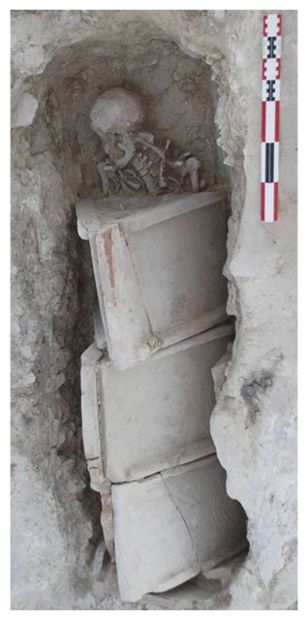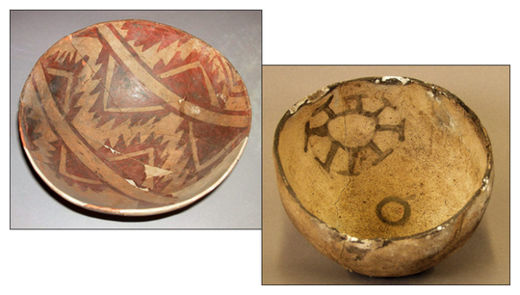
© International Journal of PaleopathologyArchaeologists working at the site of La Fogonussa near Lleida, in Spain, have uncovered an ancient female skeleton with an odd tumor embedded with teeth hidden in her pelvis.
In a necropolis in Spain, archaeologists have found the remains of a Roman woman who died in her 30s with a calcified tumor in her pelvis, a bone and four deformed teeth embedded within it.
Two of the teeth are still attached to the wall of the tumor researchers say.
The woman, who died some 1,600 years ago, had a condition known today as an ovarian
teratoma which, as its name indicates, occurs in the ovaries
. The word Teratoma comes from the Greek words "teras" and "onkoma" which translate to "monster" and "swelling," respectively. The tumor is about 1.7 inches (44 millimeters) in diameter at its largest point.
"Ovarian teratomas are bizarre, but benign tumors," writes lead researcher Núria Armentano, of the ANTROPÒLEGS.LAB company and the Universitat Autònoma de Barcelona, in an email to LiveScience.
The tumors come from germ cells, which form human eggs and can create hair, teeth and bone, among other structures.
This is the first time scientists have found this type of teratoma in
the ancient world.
"[T]his is an extraordinary case, not only for its antiquity, but also its identification in the archeological record," writes the research team in a paper published recently in the
International Journal of Paleopathology.The woman lived at a time of decline for
the Roman Empire, with new groups (popularly known as the "barbarians") moving into Roman territory, eventually taking over Spain and other areas.



